Food and drink highlights of Croatia
- Tipping - It is good to leave a tip for the staff, around 10%. It is not included in the bill.
- Eating hours -
- Shopping hours - Shops and supermarkets are open from around 8am to 7 or 8pm Monday to Saturday.
- Discount shops -
- Cuisine type - Generally, the Croatian cuisine has been influenced by many other countries such as Turkey, Hungary, Greece, Austria and hugely by Italy.
- Savoir Vivre - Eating a meal using a fork and a knife on the go or on the beach will make you look poor or cheap (in the local's eyes).
- Main ingredients - Most recipes are based on local products: fresh fish and seafood, delicious fruit and vegetables, and olive oil.
- Most popular alcohol - Rakija is the most popular spirit in Croatia. Herbal rakija - Travarica - is usually served together with dried figs at the beginning of the meal.
- Important info - Not everywhere you will be able to pay using credit card (even if there is a sign or a terminal at the restaurant).
Did you find this information valuable?
Thank you for co-creating with us! 😊 Remember to give us feedback by pressing the thumbs up or down under every section.
The quality of content is essential for us. Please let us know what influenced your opinion.
Thank you!
Foods to try in Croatia
- Crni rižotBlack risotto' is far more tasty than it sounds - or looks. Squid ink provides the distinctive colouring and satisfying flavour. The meaty ingredients are squid and seafood.
- GregadaA fish stew often made with scorpion fish or grouper – whatever is fresh that day is chopped into large chunks and added to a pot of generously sliced potatoes and lashings of olive oil.
- Kvarner scampiIn Istria as well as Kvarner you’ll find the scampi boiled, grilled, prepared in sauce, marinated, breaded, wrapped in Istrian ham, spit-roasted and even raw, embellished by first-class olive oil.
- PašticadaPašticada is a stew of marinated beef, prunes, figs and alcohol of some sort, wine or prosecco. Served with gnocchi, it’s a dish served on certain saints’ days or at weddings.
- PljeskavicaEssentially a large patty of minced meat, a slightly spicy mix of beef and lamb, pljeskavica is served similarly to ćevapčići, with large dollops of ajvar pepper relish and a small mound of chopped raw onion.
Did you find this information valuable?
Thank you for co-creating with us! 😊 Remember to give us feedback by pressing the thumbs up or down under every section.
The quality of content is essential for us. Please let us know what influenced your opinion.
Thank you!
Unusual facts about food in Croatia
- Between 2pm and 5pm there is a brake (siesta) and many Croatians take a nap.
- Many dishes are distinctive only for a certain region and they are unavailable in others.
- Historically, there were 3 main meals eaten during the day and lunch was the most important and hearty but that changed over the years.
- The amount of seafood diversity is unusually large in Croatia.
- Croatian olive oil is excellent but can be pricey and is often underrated.
Did you find this information valuable?
Thank you for co-creating with us! 😊 Remember to give us feedback by pressing the thumbs up or down under every section.
The quality of content is essential for us. Please let us know what influenced your opinion.
Thank you!
Place to stay in Croatia
- Best booking sites -
- Seasonality - The high season lasts from June to August and prices are the highest during this period.
- Cost-effective - The cheapest option is small private campsites and private apartments or houses.
- Formalities - Checking in as a tourist will require the owner to register you in a tourist office shortly after arrival. You will need an ID card or passport upon check-in.
- Air conditioning -
- Parking - Private apartments or hotels usually have available and free parking for guests. But not all of them, in large cities it is worth checking it when booking.
- Camp - There are many campsites in Croatia, they are cheap and offer a wide variety of extra activities.
- Important - Check the exact prices twice, while camping, because there are many additional small costs such as electricity.
Did you find this information valuable?
Thank you for co-creating with us! 😊 Remember to give us feedback by pressing the thumbs up or down under every section.
The quality of content is essential for us. Please let us know what influenced your opinion.
Thank you!
Accommodation in Croatia
- Conditions of accommodation are excellent in Croatia, even better than most of the western countries.
- Breakfasts are included in hotels and sometimes even dinners.
- Hotel brands are usually focused around one region.
- Hotels often offer some additional activities for tourists.
- When searching, be sure to pay attention to the distance from the sea, parking (for motorists), distance from bus stops (for non-motorized), reviews on forums.
Did you find this information valuable?
Thank you for co-creating with us! 😊 Remember to give us feedback by pressing the thumbs up or down under every section.
The quality of content is essential for us. Please let us know what influenced your opinion.
Thank you!
Getting around Croatia
- Most popular - The main transport mode for getting around Croatia are buses, or ferries if you’re visiting the islands.
- Cost-effective - Check the price of internal flights in Croatia because they can be cheaper than taking a train or bus, especially off-season and off-hours.
- Time-efficient - A car is the best choice despite Croatia's system of buses and ferries. Traveling by car can take you to most places you want to go to, at any time.
- Traffic safety - Roads in Croatia are mostly safe and of good quality. However, dangerous roads in Croatia can be found. Usually, they happen to be island roads or mountain peaks.
- Important - Have your seatbelts on at all times, as police have a very strict approach to this rule.
- Warning - The law on the prohibition of parking is strictly adhered to; vehicles parked in unauthorized places are most often towed to police car parks in a short time, and drivers face heavy fines.
Plane
- Main international airports are located in Zagreb, Dubrovnik, Zadar, Pula, Rijek, Osijek and Split.
- Hydroplanes are a popular travelling option across the coastline and not only, they allow you to reach places faster but they provide you with unique views.
- Hydroplanes departure from major harbours and you can book the tickets online.
Train
- The northern regions, especially Slavonia, Baranja, and Zagreb's surroundings, have a very well developed rail connection network. Lines cross in every major city, and travel by train is faster and cheaper than by bus.
- Unfortunately, things are not good on the coast. The three highest mountain ranges in Croatia: Kapela, Velebit, and Biokovo, effectively impede the development of connections. The railway only reaches Zadar, Šibenik, and Split.
- It is best to buy train tickets in advance in blagajna, i.e., ticket offices, because they are more expensive on the train.
Boat
- They are the best way to reach smaller islands of Croatia.
- Tickets can be purchased online or at the harbour office, during high season you should reserve them in advance.
- The most up-to-date information on ferry connections can be found on the Jadrolini website www.jadrolinija.hr, and on other carriers' websites.
- The transportation of passengers on yachts and motorboats in violation of certain limits or other regulations is treated rigorously and may even result in the forfeiture of the boat to the state treasury.
Car
- Renting a car in advance will allow you to get a better price (especially in high season).
- If you intend to take the car aboard on a local ferry, you should inform the car rental agency at the time of pick-up. There may be an extra charge.
- Croats, especially in the south, are impatient and looking for the first sell-out opportunity.
- In Croatia, you drive on the right side of the road.
Bus
- Usually there are a few different buses taking similar routes.
Hitchhiking
- This is a common way to travel around the country.
- It is rather easy to hitch along the coast, and waiting time hardly ever exceeds 20 minutes.
- Croatia can be great for hitchhiking. Traveling this way is considered rather safe.
Did you find this information valuable?
Thank you for co-creating with us! 😊 Remember to give us feedback by pressing the thumbs up or down under every section.
The quality of content is essential for us. Please let us know what influenced your opinion.
Thank you!
How to travel in Croatia
- Highways and freeways are brand new, and they connect major cities of Croatia.
- Parking fees are really high, especially in city centers and major towns.
- Outside the high season (November - April) the means of public transport departure less often during the day.
- You often may encounter traffic jams on routes (motorways) leading into or out of the main city.
- Certain highways can be closed during the year due to strong winds.
Did you find this information valuable?
Thank you for co-creating with us! 😊 Remember to give us feedback by pressing the thumbs up or down under every section.
The quality of content is essential for us. Please let us know what influenced your opinion.
Thank you!
Best time to visit Croatia
When to go
- For the beach holiday, the best time is July and August. The rest of Croatia (inland regions, including the capital) can be visited from May to September. The sun is often shining, but storms are possible in the afternoon (on average once every 3 or 4 days).
Temperature
- Temperatures in Croatia depend on the location in relation to the mountains and exposure to winds. The average monthly air temperature is as follows: January 3° C and July 24 °C - Rijeka; January 9 °C and July 27 °C - Dubrovnik; January 0 °C and July 24 °C - in the interior.
Rainfall
- The annual sum of atmospheric precipitation ranges: - 700-1300 mm on the coast, mainly in winter; - 1000-1500 mm inland; - 3000 mm - mountain areas - Biokovo, Velebit.
Spring
- In Croatian resorts, it is possible to feel real spring already in March's first days.
Fall
- Autumn rains (can be heavy in the coastal area) begin in the middle of September. In autumn, the moist southerly winds prevail.
Summer
- The summers at the seaside are sunny, hot and dry, in the interior there is a moderate continental climate, which means slightly lower temperatures and possible rain that hardly exists on the coast during this period.
Winter
- The winter months on the Croatian coast are wet and windy, although the rule of thumb is that the air temperature does not drop below zero even then. However, these specific conditions are just right on the shoreline - distance from the sea is almost always entered into the mountains, where precipitation takes the form of snow and freezing temperatures.
Did you find this information valuable?
Thank you for co-creating with us! 😊 Remember to give us feedback by pressing the thumbs up or down under every section.
The quality of content is essential for us. Please let us know what influenced your opinion.
Thank you!
Croatia weather Insights
- Croatia is located in two main climatic zones - temperate and mediterranean.
- Mediterranean climate is located in the south east coast, as well as on the Dalmatian islands.
- Temperate continental climate covers the majority of the country, the centre, the north and the western coast.
- It is basically warmer in the southern coastline than in the north.
Did you find this information valuable?
Thank you for co-creating with us! 😊 Remember to give us feedback by pressing the thumbs up or down under every section.
The quality of content is essential for us. Please let us know what influenced your opinion.
Thank you!
Savoir-Vivre in Croatia
- Greetings - A handshake with direct eye contact is the most common form of greeting. The opposite sexes/genders tend to kiss on a cheek twice, as a gesture of salutation.
- Punctuality -
- Dress code - People tend to dress neatly and modestly. Wearing excessively casual clothing in public may be considered inappropriate. Avoid wearing beachwear in the city.
- Temple entrance - If you’re not Catholic but wish to visit churches, feel free to; you’ll be absolutely welcomed (sometimes for a fee), but dress in a modest way.
- Home invitation - Bring a gift for the host (flowers, alcohol) , while visiting a household.
- Etiquette - If you are a woman, avoid sunbathing topless on beaches other than the ones marked as ‘FKK’.
- Drones - We recommend using this map to easily check the applicable restrictions.
Did you find this information valuable?
Thank you for co-creating with us! 😊 Remember to give us feedback by pressing the thumbs up or down under every section.
The quality of content is essential for us. Please let us know what influenced your opinion.
Thank you!
Things not to do in Croatia
- Avoid talking about the war in the Balkans, as it is a very controversial topic of quite fresh events.
- Please do not mix Croatia and Yugoslavia or refer to it as the same country.
- Avoid joking about Croatia as locals are very serious if something concerns their nation.
- Most of the Croatian beaches are covered with rocks, not sand. Get comfortable water shoes that protect against the occasional sea urchin that may loiter near the water's edge.
- Religion is an important part of the Croatian lifestyle, especially the Roman Catholic faith. Should be approached with sensitivity with topic like divorce, euthanasia and family planning.
Did you find this information valuable?
Thank you for co-creating with us! 😊 Remember to give us feedback by pressing the thumbs up or down under every section.
The quality of content is essential for us. Please let us know what influenced your opinion.
Thank you!
Interesting facts about Croatia
- Ask and inquire a lot of questions or opinions concerning the history and traditions, because the locals really value such curiosity.
- It is typical for croatians to speak very loudly (to the point of shouting) and expressly (it even may look like a dispute).
- Unfortunately, the amount of mosquitos enlarges during the summer season.
- When Croatians invite each other to the bar they usually pay for the first or couple drinks but they will expect you to return the favor.
- Every town has its own Patron Saint (christian saint) and the towns annually organize a ceremony to honor those saints.
Did you find this information valuable?
Thank you for co-creating with us! 😊 Remember to give us feedback by pressing the thumbs up or down under every section.
The quality of content is essential for us. Please let us know what influenced your opinion.
Thank you!
Best souvenirs from Croatia 💝
Beautiful, sunny beaches, wonderful architecture, delicious cuisine and friendly people - no wonder that you want to remember your trip to Croatia for as long as possible and show a little of its beauty to your loved ones! In this article, you will find inspiration about the best, most interesting souvenirs that you can bring from Croatia. Check it out!
🍺 Beverages
Maraschino 💲 💲 💲 💲
Maraschino is a liqueur that was originally produced by Dominicans about 500 years ago. It is made from distilled Maraschino cherries that grow all over the Dalmatian coast.
📌 Region: Zadar
🛒 Where to buy: liqueur stores, supermarkets, local shops
💰 Price range: 150 - 200 HRK
🎁 For whom: grandparents, parents, friends, spouse
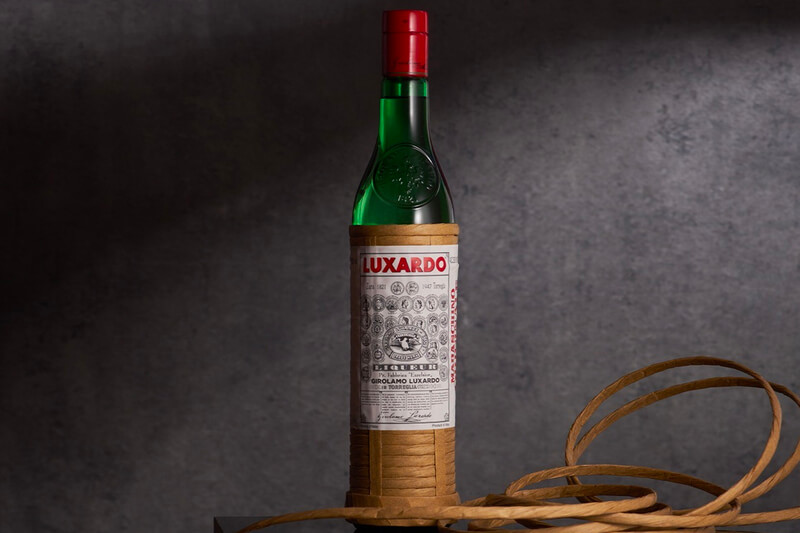
Rakija 💲 💲 💲 💲
Raki or Rakija are fruit brandy spread throughout the Balkans. It has many flavors - plum, apricot, grape are just a few of the available variants. The alcohol content is between 40 and 50%.
🛒 Where to buy: markets, supermarkets, liqeur store
💰 Price range: 40 - 140 HRK
🎁 For whom: grandparents, parents, friends, spouse
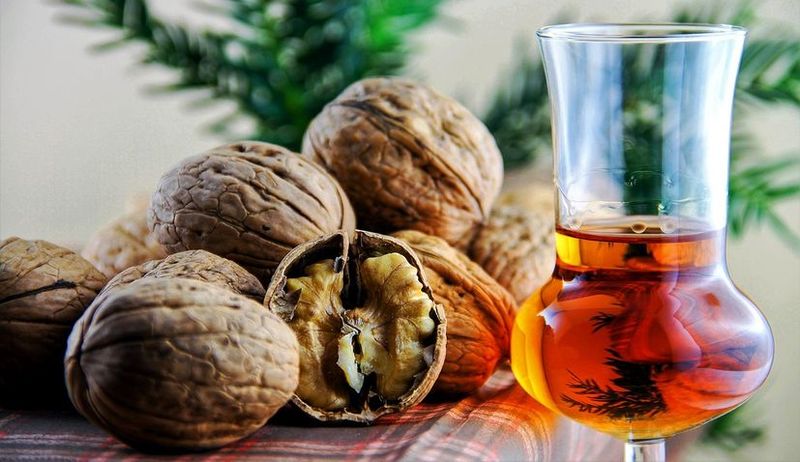
👚 Clothes
Cravat 💲 💲 💲 💲
Cravat is nothing but a Croatian tie and at the same time the most popular souvenir from this country. Nowadays it is worn during International Tie Day, but in the past it was worn mainly by Croatian soldiers. Some inhabitants claim that the ties were an expression of loyalty - women tied them to their husbands before they left to let them know they would wait for them.
🛒 Where to buy: gift shops, clothing stores
💰 Price range: 200 - 1500 HRK
🎁 For whom: grandparents, parents, spouse

Šibenik Cap 💲 💲 💲 💲
The Šibenik cap is a characteristic souvenir of this town, which has been included in the UNESCO list of Non-material Cultural Heritage. You will find it in red or orange with black embroidery.
📌 Region: Šibenik-Knin
🛒 Where to buy: gift shops
💰 Price range: 100 - 200 HRK
🎁 For whom: friends
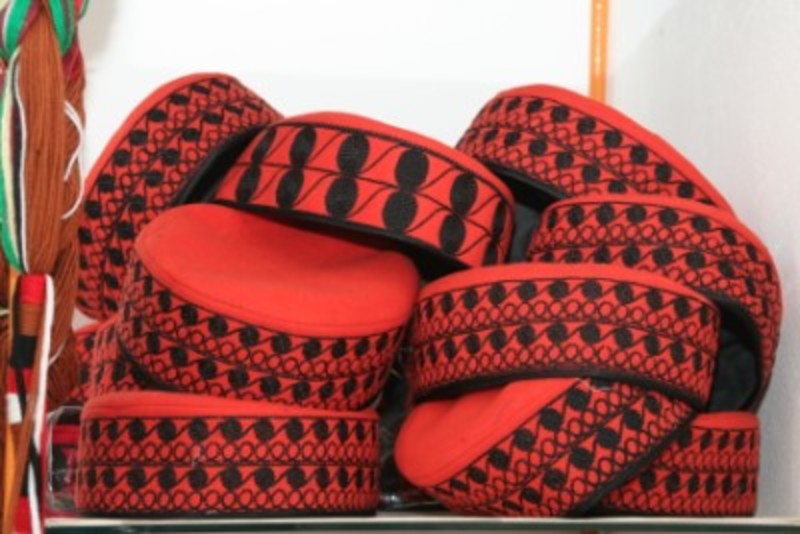
🛍 Collections
Gusle 💲 💲 💲 💲
Gusle is a musical instrument which is an important element of folk music. At first glance it looks like a guitar, but in fact it resembles only the shape of a resonance box.
📌 Region: South Coast
🛒 Where to buy: gift shops, dedicated shops
💰 Price range: 1000 - 3000 HRK
🎁 For whom: spouse
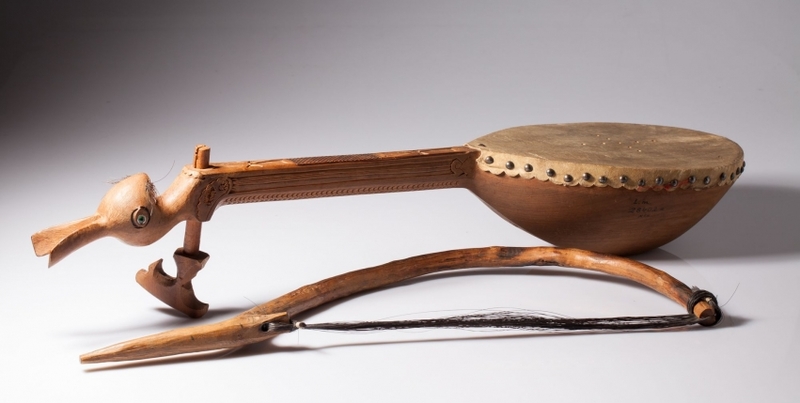
Nautical bracelet 💲 💲 💲 💲
Handmade sea bracelets are a unique souvenir - you won't find two the same!
📌 Region: City of Zagreb, Split-Dalmatia, Dubrovnik-Neretva
🛒 Where to buy: dediacted shops, gift shops
💰 Price range: 200 - 400 HRK
🎁 For whom: parents, friends, spouse, kids
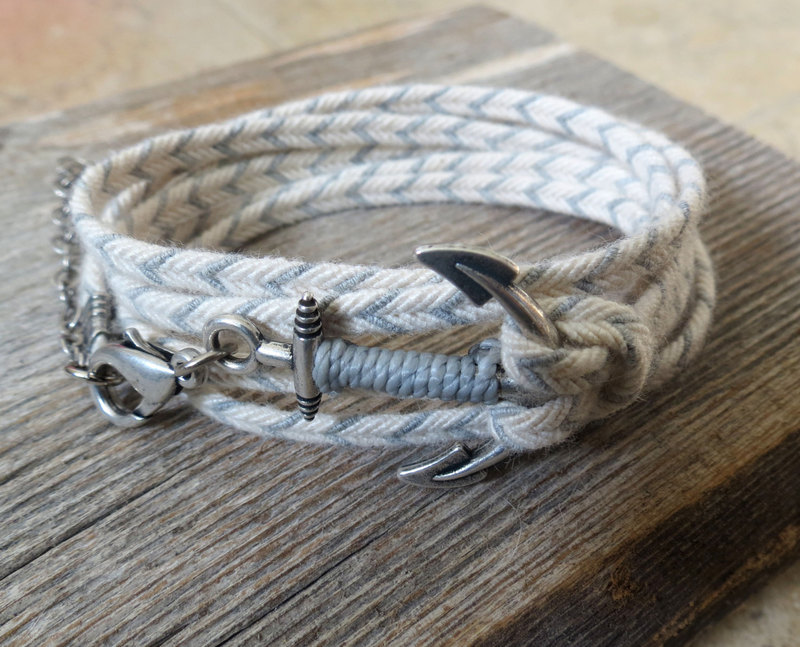
Šestine umbrella 💲 💲 💲 💲
Šestine is a small village located near the capital of Croatia. It is where the famous umbrellas come from. The most traditional model is red and has decorative patterns on its edges. The umbrella is an important element of traditional Croatian folk costume.
📌 Region: City of Zagreb
🛒 Where to buy: dedicated shops, markets
💰 Price range: 120 - 300 HRK
🎁 For whom: grandparents, parents, spouse
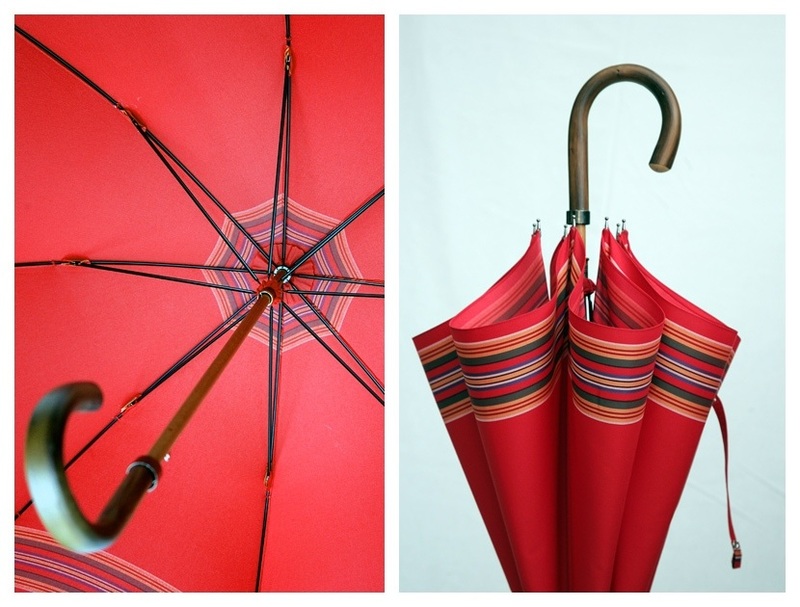
Wooden toys 💲 💲 💲 💲
The best wooden toys in Croatia are made in the Hrvatsko Zagorje region. Thanks to the extraordinary techniques of their production, they have been included in the UNESCO list of Intangible Cultural Heritage.
📌 Region: Hrvatsko Zagorje
🛒 Where to buy: gift shops, toy shops, local shops
💰 Price range: 100 - 400 HRK
🎁 For whom: kids
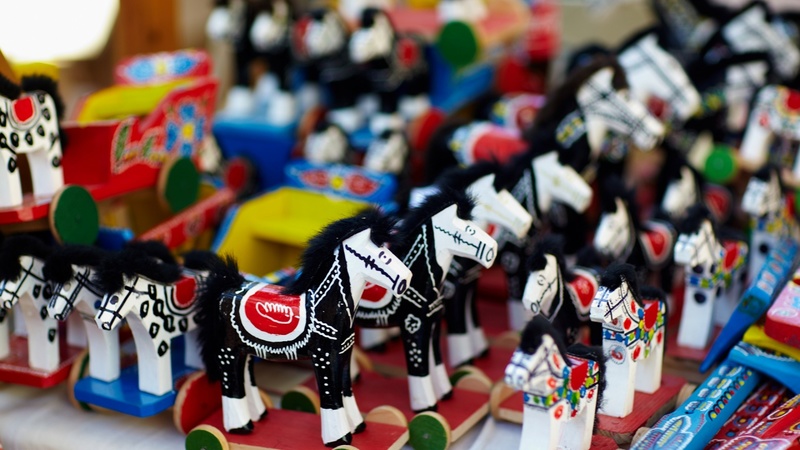
Zovnica 💲 💲 💲 💲
Zovnica is a light-colored woolen bag with crazy patterns, which makes many people associate it with folklore. Historically, it was worn not only by women, but also by children who wore it to school.
🛒 Where to buy: gift shops, dedicated shops
💰 Price range: 80 - 150 HRK
🎁 For whom: spouse
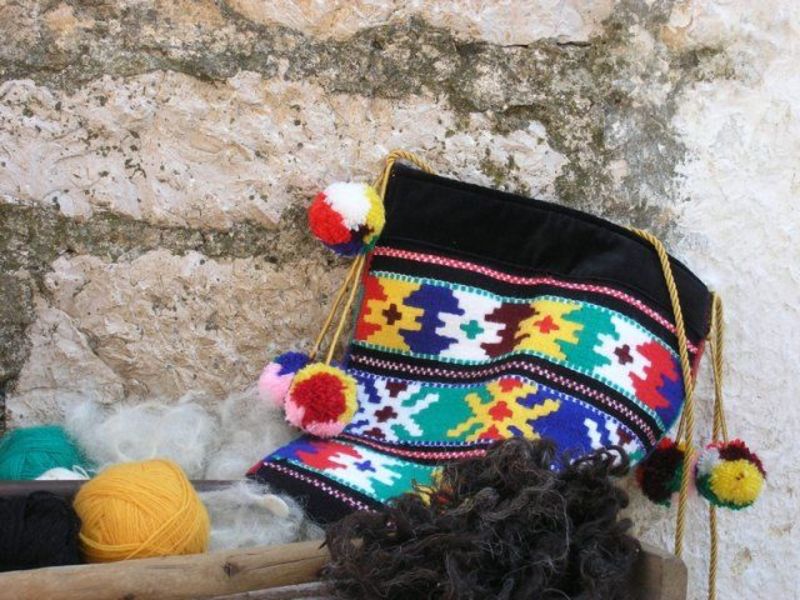
💄 Cosmetics
Lavender oil 💲 💲 💲 💲
Essential lavender oil can be purchased from locally processed lavender flowers, especially easy to get it on the island of Hvar.
📌 Region: Hvar Island
🛒 Where to buy: drugstores, perfumeries, supermarkets
💰 Price range: 25 - 35 HRK
🎁 For whom: grandparents, parents, spouse

Lavender soap 💲 💲 💲 💲
Every year a lavender festival is held on the island of Hvar in the village of Velo Grablje. It is here that crowds of tourists come to enjoy the view of violet fields. As a souvenir you can buy lavender soap made by local companies. Beautiful color and smell guaranteed!
📌 Region: Hvar Island
🛒 Where to buy: drugstores, perfumeries, supermarkets, local shops, festive shops
💰 Price range: 25 - 40 HRK
🎁 For whom: grandparents, parents, spouse
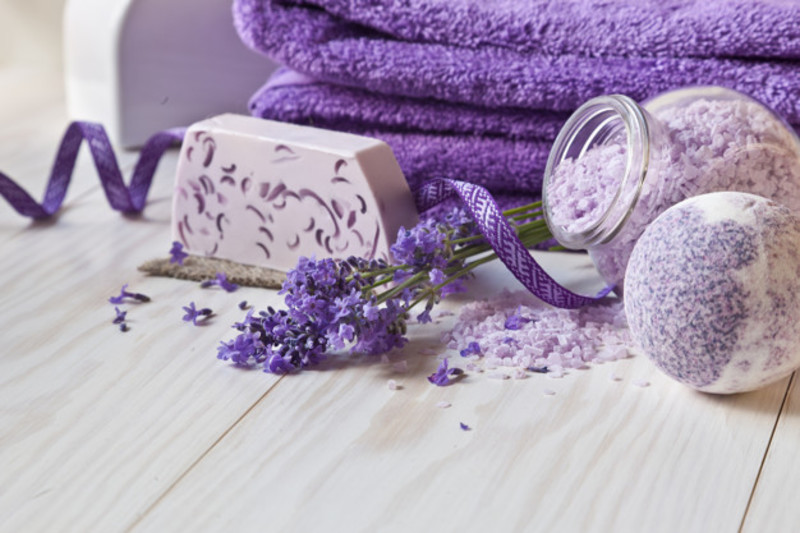
🥗 Food
Cheese 💲 💲 💲 💲
On the island of Pag you will certainly meet sheep, whose milk is used to make the best cheeses in Croatia. There are many types - each one has a unique taste thanks to special mixtures of spices.
📌 Region: Pag Island
🛒 Where to buy: markets, local producers, cheese tasting rooms
💰 Price range: 150 - 300 HRK
🎁 For whom: grandparents, parents, friends, spouse
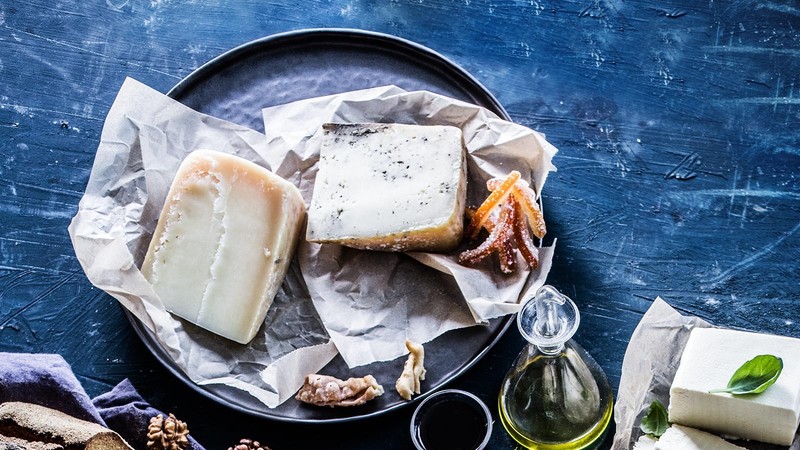
Jam 💲 💲 💲 💲
Local jams are available in many flavors. What they have in common is the fact that they are all made according to home made methods. You can be sure of their unique taste!
🛒 Where to buy: markets
💰 Price range: 40 - 100 HRK
🎁 For whom: grandparents, souvenirs.for_whom.parenst, friends, spouse, kids
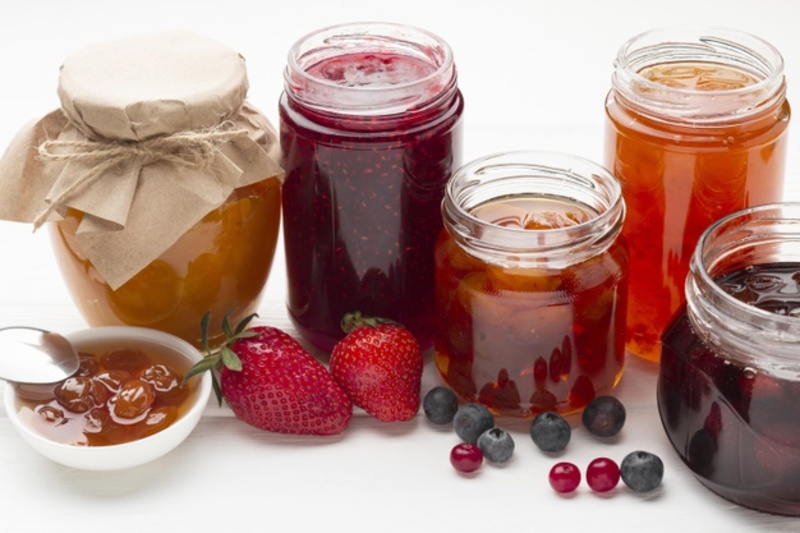
Kulen 💲 💲 💲 💲
Kulen is a sausage made from minced pork - typical Croatian meat. The sausage is spicy - a large amount of bell pepper is responsible for this, and contains little fat!
🛒 Where to buy: markets, supermarkets, butcher stores
💰 Price range: 100 - 400 HRK
🎁 For whom: grandparents, parents, spouse
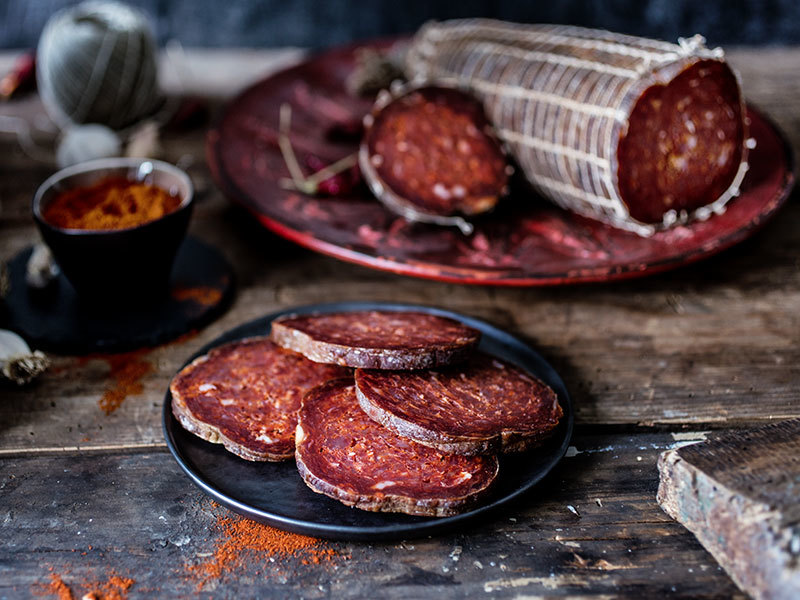
Licitar heart 💲 💲 💲 💲
Gingerbread is popular in northern parts of Croatia, especially in Zagreb. Traditional gingerbreads have the shape of a heart, they are red polished and have inscriptions in Croatian.
📌 Region: City of Zagreb
🛒 Where to buy: markets
💰 Price range: 5 - 20 HRK
🎁 For whom: spouse
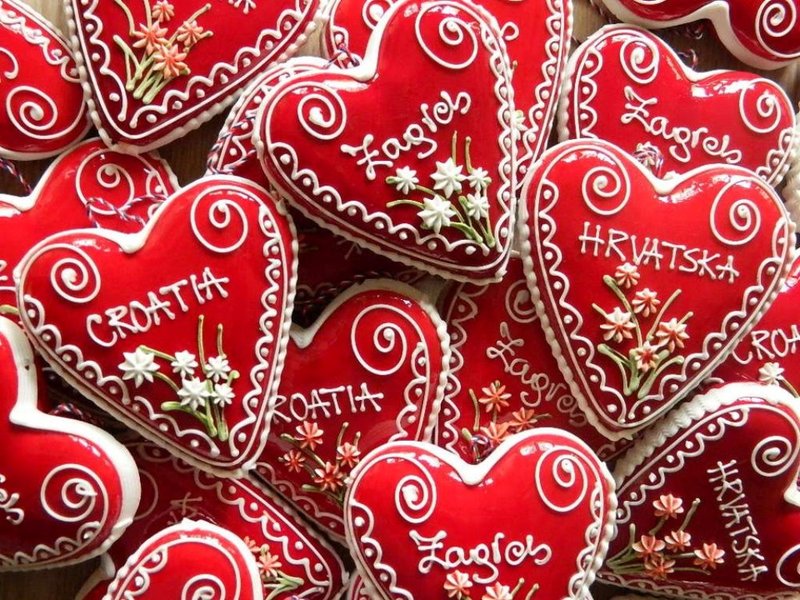
Olive oil 💲 💲 💲 💲
Unlike oils produced by other Mediterranean countries, Croatian oils are hard to find in a traditional supermarket. It is worth buying Croatian oil while visiting Istria.
📌 Region: Istria
🛒 Where to buy: local producers, supermarkets
💰 Price range: 120 - 300 HRK
💡 Pro tip: The best croatian olive oil is produced by a local BRIST company.
🎁 For whom: grandparents, parents, friends, spouse
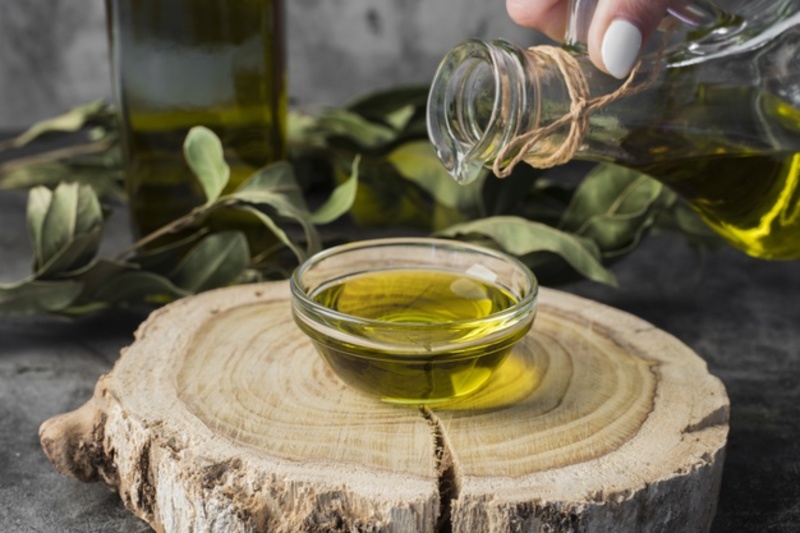
🖖 Handmade
Jamallu products 💲 💲 💲 💲
A local Jamallu company creates handicrafts such as cloths, pillowcases, bags, pouches and aprons, which are small works of art.
📌 Region: Split-Dalmatia
🛒 Where to buy: gift shops, official Jamallu shops
💰 Price range: 70 - 150 HRK
🎁 For whom: grandparents, parents, friends, spouse, kids
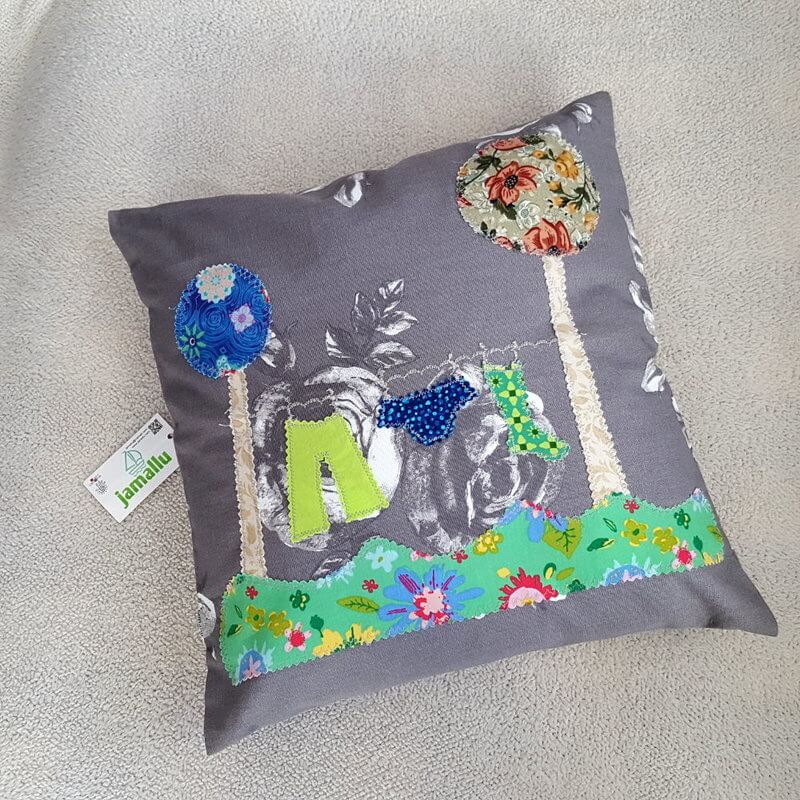
Lace 💲 💲 💲 💲
Croatian lace embroidery methods are part of Croatian culture - they are even on the UNESCO list of Intangible Cultural Heritage. The laces resemble the shape of a napkin. The most popular color is white, but you will find them in other colors as well.
📌 Region: Hvar Island, Pag Island, Varazdin County
🛒 Where to buy: dedicated shops, local workshops
💰 Price range: 40 - 1000 HRK
🎁 For whom: grandparents, parents
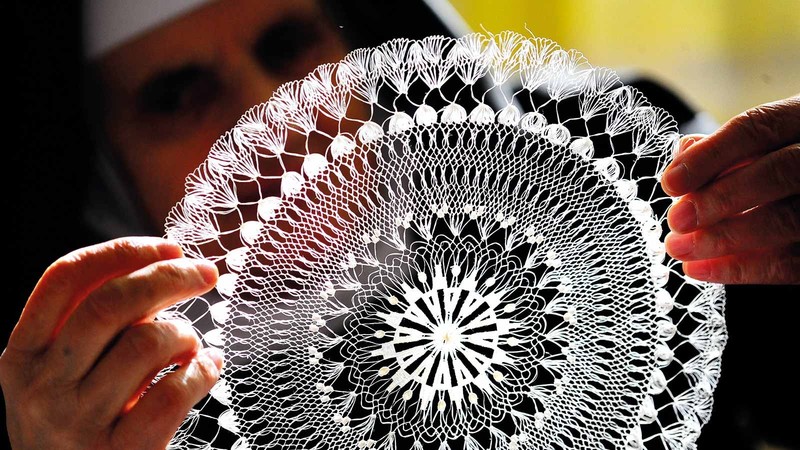
🏡 Home Decor
Crystal glass 💲 💲 💲 💲
The small village of Samobor is one of the regions where you can find original glass products that have been produced according to a special technique for several hundred years.
📌 Region: Zagreb
🛒 Where to buy: dedicated shops
💰 Price range: 250 - 500 HRK
🎁 For whom: souvenirs.for_whom.grandparetns, parents, spouse
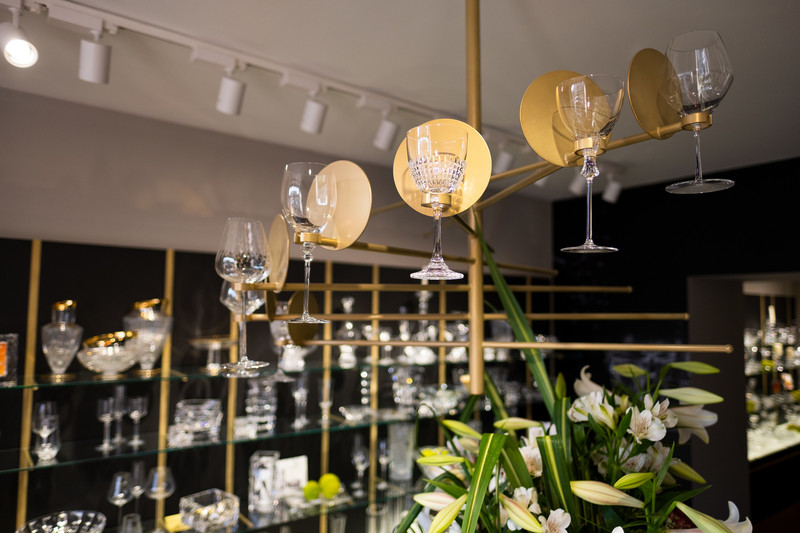
Vučedol dove 💲 💲 💲 💲
Vučedol is a symbol of the town of Vulkovar, which dates back to ancient times. It represents a pigeon on three legs with parallel decorative lines on its wings.
📌 Region: Vukovar-Syrmia
🛒 Where to buy: gift shops
💰 Price range: 40 - 200 HRK
🎁 For whom: grandparents, souvenirs.for_whom.parenst, friends, spouse
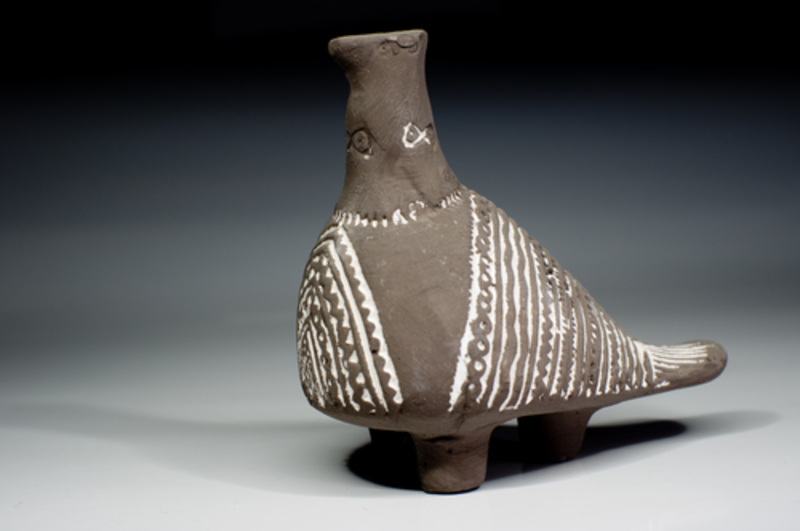
 Croatia - Souvenirs
Croatia - Souvenirs
Regardless of what souvenirs you are looking for - we hope that we were able to advise you something just right for you and your loved ones! Or maybe you have another idea for proven souvenirs from Croatia? Please let us know!
Did you find this information valuable?
Thank you for co-creating with us! 😊 Remember to give us feedback by pressing the thumbs up or down under every section.
The quality of content is essential for us. Please let us know what influenced your opinion.
Thank you!
Croatia packing list 💡
- Bathing suit and sunglasses - It is a must-have when traveling to this beautiful sunny country!
- Cream with high SPF and after sun lotion - Without skin protection, you can burn and spend the next days in a hotel instead of on the beach.
- Water shoes - Preferably with a thick sole to protect against sea urchins or sharp rocks.
- Diving fins and mask - In the waters of the Adriatic, it is worth looking at the underwater world.
- Sports or trekking shoes - In case of walks in higher parts of the land.
Did you find this information valuable?
Thank you for co-creating with us! 😊 Remember to give us feedback by pressing the thumbs up or down under every section.
The quality of content is essential for us. Please let us know what influenced your opinion.
Thank you!
Get a personalized packing list before travel to Croatia 🧳
Health information
Health risks and required vaccinations
Packing lists
Personalized item list to pack matching your destination
Weather insights
Packing list adjusted to local weather
To-do lists
Everything you need to do before leaving home
Weight limits
Never pay excess baggage fees again
Local prices
Average cost of food, tickets and accommodation
Things to do in Croatia ⭐
- Must see places: 🏛️ Dubrovnik, 🏛️ Pula, 🏞️ Kamenjak
- Most popular activities: 🥾 Hiking, 🏖️ Sunbathing, 🚢 Sailing
- Most popular sports: 🏊♀️ Water sports, 🧗 Climbing, 🪂 Paragliding
Top attraction in Croatia 📸
Tourist information about Croatia
| Country | Croatia |
| Capital | Zagreb |
| Currency | Croatian kuna |
| Language | Croatian |
| Timezone | GMT+1 |
| English speaking | Widely spoken (medium) |
| LGBT tolerance | Low |
| Gender ratio (overall) | 52% | 48% |
| Population | 4.1 mln |
| Visitors per year | 17.4 mln |
Did you find this information valuable?
Thank you for co-creating with us! 😊 Remember to give us feedback by pressing the thumbs up or down under every section.
The quality of content is essential for us. Please let us know what influenced your opinion.
Thank you!
Useful information about Croatia
| Card payments | |
| ATM Availability | Widely available |
| Suggested ATM takeout | 1000 HRK |
| Drinking in public | |
| Tap water | |
| Internet speed (avg.) | 66 Mbps |
| Socket type |
|
| Best taxi app | |
| Public toilets | Popular & Paid |
| Top mobile providers | Telekom, A1, Tele2 |
| Best internal air carrier | Croatia Airlines |
Did you find this information valuable?
Thank you for co-creating with us! 😊 Remember to give us feedback by pressing the thumbs up or down under every section.
The quality of content is essential for us. Please let us know what influenced your opinion.
Thank you!
Cost of living in Croatia
| Meal, Inexpensive Restaurant |
7.29 EUR
8.56 USD
6.36 GBP
30.73 PLN
55 HRK
|
| Meal for 2 People, Mid-range Restaurant |
34.48 EUR
40.44 USD
30.05 GBP
145.26 PLN
260 HRK
|
| Domestic Beer (0.5 liter draught) |
2.12 EUR
2.49 USD
1.85 GBP
8.94 PLN
16 HRK
|
| Gasoline (1 liter) |
1.33 EUR
1.56 USD
1.16 GBP
5.62 PLN
10.06 HRK
|
| One-way ticket (public transport) |
1.33 EUR
1.56 USD
1.16 GBP
5.59 PLN
10 HRK
|
Did you find this information valuable?
Thank you for co-creating with us! 😊 Remember to give us feedback by pressing the thumbs up or down under every section.
The quality of content is essential for us. Please let us know what influenced your opinion.
Thank you!
Quality of life in Croatia
| Quality of life | High |
| Safety Index | High |
| Healthcare likability | High |
| Climate likability | Very high |
| Costs of living | Low |
| Level of pollution | Low |
Did you find this information valuable?
Thank you for co-creating with us! 😊 Remember to give us feedback by pressing the thumbs up or down under every section.
The quality of content is essential for us. Please let us know what influenced your opinion.
Thank you!
Important numbers
| General emergency number (mobile phone) | 112 |
| Fire | 193 |
| Police | 192 |
| Rescue at sea | 195 |
| Ambulance | 193 |
Did you find this information valuable?
Thank you for co-creating with us! 😊 Remember to give us feedback by pressing the thumbs up or down under every section.
The quality of content is essential for us. Please let us know what influenced your opinion.
Thank you!

